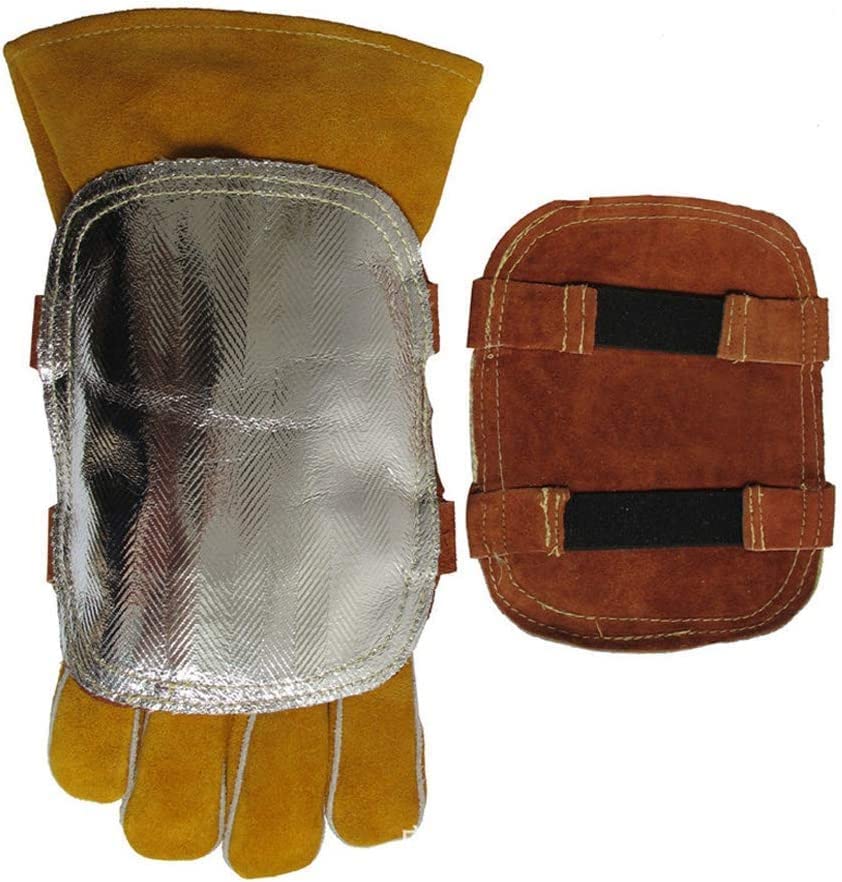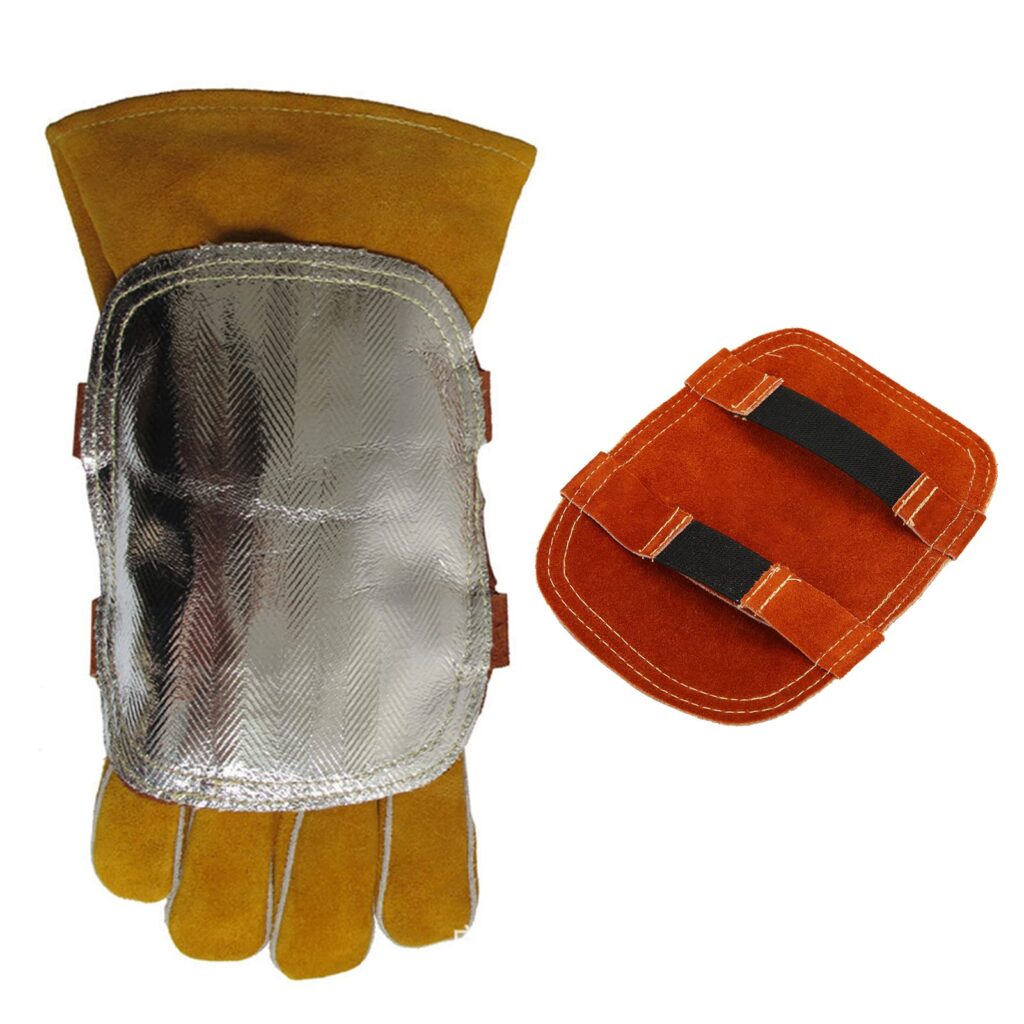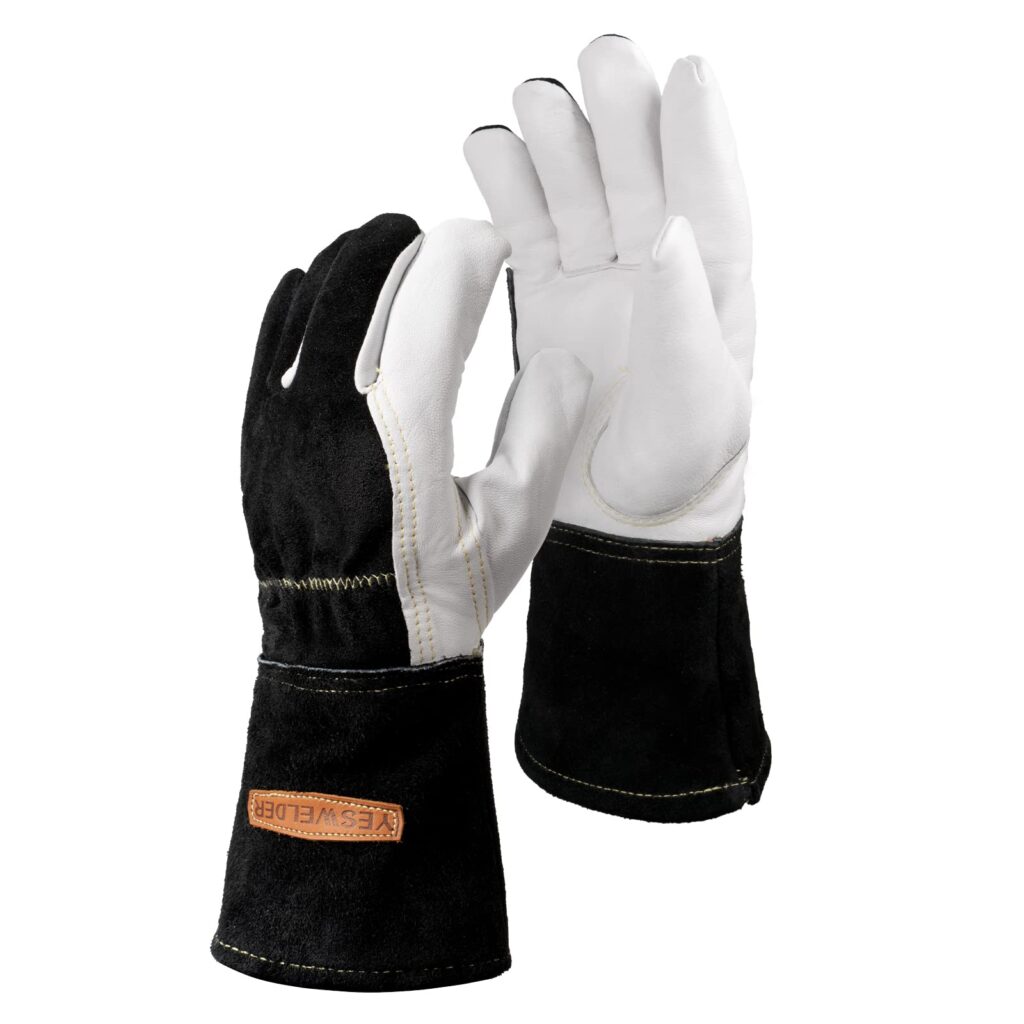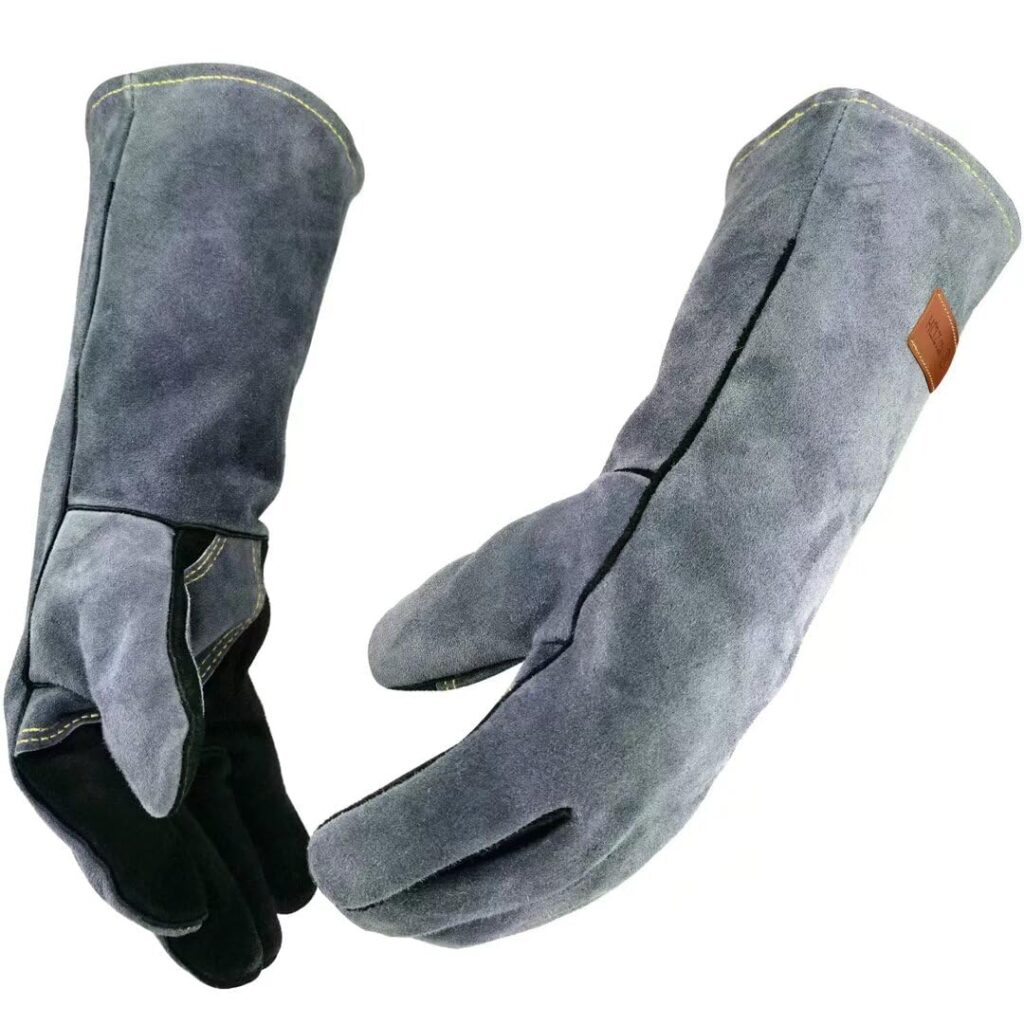Welding gloves are not just a safety measure but a crucial necessity. They play a vital role in protecting the hands from hot metal, sparks, and other hazards, thereby reducing the risk of burns and exposure to harmful rays. The right pair of gloves, chosen based on your specific needs and welding tasks, can significantly enhance comfort and performance while welding, helping you work safely and efficiently. The heat resistance of welding gloves is a key feature to consider. The higher the heat resistance, the more protection the gloves can provide, especially when working with high-temperature materials or in environments with intense heat.
Welding gloves, crafted from diverse materials like leather and flame-resistant fabrics, offer protection and flexibility. They are designed for safety and enhance comfort and performance during welding, ensuring you work with ease and agility. Understanding the different materials used in these gloves will help you choose the optimal combination based on your needs.
When choosing welding gloves, it’s vital to consider the material, size, and heat resistance. Quality gloves should fit well, allow movement, and offer adequate protection. However, your individual needs and preferences also play a significant role in the selection process. Understanding what you prioritize, whether it’s heat resistance or comfort, can guide you to the best choice.
To ensure the right fit, measure your hand circumference and length and refer to the manufacturer’s size chart. If you need more clarification about the size, it’s always best to go for a slightly larger size, as it’s easier to work with a glove that’s a little loose than one that’s too tight. Our rigorous testing process, focusing on comfort, durability, and heat resistance, has led us to the best options for welders of all skill levels. Visit our site, Ice Age Tools, for more information.
Top Welding Gloves For Protection
Our recommendations are based on a thorough testing process in various welding situations, ensuring the gloves can handle the heat and provide the necessary protection. This gives you the confidence to choose gloves suitable for multiple environments.
Revco GM1611 Welding Gloves

These gloves are a solid choice for anyone wanting reliable protection and comfort in welding.
Pros
- Comfortable cotton lining that doesn’t add bulk
- Excellent flexibility due to seamless finger design
- Strong Kevlar stitching for durability and heat resistance
Cons
- It may take time to break in for some users
- Not as thick as some might expect for heavy-duty work
- Sizing might not fit everyone perfectly
When we first tried the Revco GM1611 Welding Gloves, their comfort and flexibility immediately stood out. The soft cotton lining feels delightful against the skin, allowing for extended wear without discomfort. Welding requires precise tool manipulation, and these gloves, thanks to their seamless index finger, provide just the right amount of protection without sacrificing dexterity. This comfort and flexibility will make you feel at ease and agile while working, enhancing your efficiency and productivity.
The build quality is impressive, too. The grain cowhide leather used in the palm provides good heat resistance and durability. Kevlar stitching runs throughout the gloves, enhancing their lifespan. We’ve been using them for different types of welding, and they hold up well even under significant heat. The reinforced palm, thumb, and index finger give extra protection where needed most, instilling a sense of security and confidence in their use.
One thing we noted is that these gloves can feel snug at first. It took a few uses to break them in completely. While they are on the thinner side, they still provide excellent protection. You might need time to adjust if you are working on heavy-duty tasks and used to thicker gloves. Overall, for both professionals and hobbyists, these gloves are a dependable choice for welding needs.
Longzhuo Welding Heat Shield

These welding gloves are a solid choice for anyone needing reliable heat protection during welding tasks.
Pros
- Excellent heat reflection to keep hands cool.
- Made from durable materials for long-lasting use.
- Comfortable fit allows for better movement.
Cons
- Some stitching may fray quickly.
- Gloves are flammable, so caution is necessary.
- Elastic straps might not hold up well over time.
Upon using the Longzhuo Welding Heat Shield, we were immediately impressed by the quality of the materials. The split cowhide leather and the aluminized back create a protective layer that shields our hands from high heat. The gloves effectively reflect heat, making our work more comfortable, and their durability instills a sense of security and confidence in their long-term use.
While the gloves perform well in protecting against heat, we did find some concerns with the stitching. After several days of use, we saw some fraying near the elastic straps. If used frequently in demanding situations, Find a way to fix this. We also realized that while they offer fantastic protection, they are flammable, which is something to keep in mind while working around open flames.
Despite these drawbacks, the Longzhuo gloves’ comfort level stood out. They allow for easy hand movement, which is crucial when working in tight spaces. These gloves provide a worthy option for anyone involved in welding, smelting, or other heat-intensive tasks. We recommend them for their heat protection and overall comfort.
Watris Veiyi Welding Gloves

These gloves are a solid option for welding tasks, providing great protection from heat and sparks.
Pros
- Excellent heat resistance
- Comfortable fit
- Good quality materials
Cons
- It can feel a bit thin
- Limited flexibility
- It may wear out quickly with heavy use
We recently tried the Watris Veiyi Welding Gloves, and our initial impression was positive. The split cowhide leather and aluminized back felt durable and essential for handling metalwork. During use, we noticed that the gloves effectively reflect heat, keeping our hands safe from those intense rays typical of welding.
Comfort is critical when wearing gloves for extended periods. These gloves fit well without being too tight, allowing for decent movement. However, we found them to be a bit thinner than expected. While they provided good heat insulation, there were times when we could use a bit more thickness for tough jobs.
Proper care and maintenance of your welding gloves are vital to guarantee their durability and security. You can avoid mishaps by keeping up with periodic cleaning and inspection for damage or wear. In our experience, the gloves work best in different welding jobs. They stand up well in environments like metal smelting and cutting, but we recommend monitoring their condition during heavy use. Your gloves will last longer and protect your hands from harm if you clean and inspect them regularly. We recommend wiping them down after each use; after checking them for potential damage or wear, store them in a dry, excellent spot. Overall, the Watris Veiyi pair is worth considering for anyone looking for reliable welding gloves.
YESWELDER Premium TIG Gloves

These gloves offer a great mix of comfort and protection, making them a solid choice for anyone into TIG welding.
Pros
- Excellent dexterity for handling delicate tasks
- Good heat resistance, especially for continuous use
- Sturdy design that holds up well over time
Cons
- Gaining full access takes time
- The size might feel snug for some users
- Some pairs may have inconsistent quality
Using the YESWELDER Premium TIG gloves has been a positive experience for us. The soft grain leather makes it easy to move our hands, and the seamless index finger provides excellent grip and control. The snug fit of the gloves allows for precision and control, making them ideal for detailed projects like TIG welding.
The heat resistance is also impressive. The thin cotton liner on the top helps keep the heat at bay without sacrificing comfort. Thanks to the unlined bottom, we can wear these without feeling overly hot for long periods. The added comfort makes them ideal for TIG welding and other tasks like handling equipment or gardening. This heat resistance will make you feel safe and protected during continuous use.
However, breaking them in can be a challenge. Initially, they feel stiff, but they get more comfortable after some use. We also noticed that the sizing might be a concern; while the large size fits snugly, individuals with larger hands might find them tight. Overall, these gloves are reliable for welders, prioritizing comfort and durability.
WZQH Welding Gloves

We highly recommend the WZQH welding gloves for anyone needing reliable heat protection while working.
Pros
- Excellent heat resistance up to 932°F.
- Stylish and long-lasting cowhide leather.
- Versatile for various tasks beyond welding.
Cons
- Not suitable for prolonged exposure to scorching surfaces.
- It can be bulky, making delicate tasks tricky.
- Requires careful cleaning and drying to maintain quality.
Using the WZQH welding gloves has been a great experience. They provide top-notch protection, especially when handling hot items. The 16-inch length adds extra safety for our forearms, a significant plus when working around grills or wood stoves.
We appreciate how the cowhide leather fits comfortably without feeling too stiff. With these, you may move at liberty while preparing meals or using implements. However, the gloves can feel a bit bulky for delicate motor tasks.
They truly shine in terms of heat resistance. We’ve used them for everything from welding to cooking on the grill. Just be cautious not to leave them in contact with extreme heat for too long. Overall, these gloves are a solid investment for various heat-related activities.
Buying Guide
Several essential features should be thought of when selecting the best welding gloves. These will help ensure safety and comfort during use.
1. Material
Welding gloves come in various materials. Common options include:
- Leather: Offers durability and heat resistance.
- Kevlar: Provides excellent protection against cuts and burns.
- Cotton: Lightweight but may not offer as much protection.
2. Heat Resistance
It’s essential to know the gloves’ heat resistance rating. Find a pair of gloves that can resist temperatures above 1000°F.
3. Fit And Comfort
The ideal glove fit is snug but not overly tight. We need to move our fingers quickly to improve our control.
4. Length
Long gloves provide extra protection for the arms. Choose a length that covers your wrists and forearms, especially for heavy-duty work.
5. Lining
A good lining can add comfort and insulation. Look for materials like fleece or cotton for added warmth.
6. Grip
The gloves should have a good grip. The tools will remain safely in place, decreasing the likelihood of mishaps.
Here’s a quick comparison table for easy reference:
|
Feature |
Importance |
|
Material |
Affects durability and protection |
|
Heat Resistance |
Determines safety in high temperatures |
|
Fit |
Ensures comfort and control |
|
Length |
Protects arms and wrists |
|
Lining |
Adds comfort and warmth |
|
Grip |
Helps with tool control |
We should consider these aspects to find suitable welding gloves for our needs.
Safety should always come first when choosing welding gloves. Suitable gloves protect hands from heat, sparks, and harmful materials.
We have highlighted several top welding gloves. Each option focuses on safety, comfort, and protection. Some gloves offer added features, like reinforced stitching and padded palms.
Selecting the right pair of gloves can help us work safely and efficiently. Properly fitted gloves enhance our grip and control, making our work easier and safer.
We must make informed choices based on our needs and specific welding tasks. Suitable welding gloves are crucial for our well-being in any welding environment.
Frequently Asked Questions
We know that choosing suitable welding gloves can be confusing. Here are some common questions that will help us understand what to look for when selecting gloves for welding.
What Features Should One Look For In High-Quality Welding Gloves?
We should look for features such as heat resistance, durability, and a good grip when selecting welding gloves. Gloves should also be comfortable and fit snugly to allow for mobility. Reinforced stitching and layered materials can enhance protection.
How Do I Choose The Best Welding Gloves For Stick Welding Applications?
We should select gloves with excellent heat resistance and protection from sparks and slag for stick welding. A thicker leather material often works best. The gloves should also allow for good talent, enabling us to handle rods and equipment safely.
What Materials Are Most Effective For Protection In Welding Gloves?
Leather is a common and practical material for welding gloves. Cowhide and goatskin are popular because they resist heat and abrasion. We may also come across gloves made of synthetic materials, which can offer flexibility and comfort.
Can Welding Gloves Provide Adequate Protection Against Electrical Shock?
Welding gloves are designed primarily for heat and flame protection. While they may provide some level of insulation, they are not made explicitly for electrical shock. For tasks involving electricity, we should use gloves rated for electrical work.
How Does The Type Of Welding Influence The Choice Of Welding Gloves?
The type of welding we perform impacts our choice of gloves. For example, MIG welding requires gloves for better sensitivity, while TIG welding gloves are thinner for more talent. Stick welding gloves need to be thicker to protect against sparks.
What Are The Differences Between Mig And Stick Welding Gloves?
MIG welding gloves are usually more flexible and thinner, allowing for better sensitivity. Stick welding gloves are often thicker and provide more heat protection. Each type depends on our jobs since it is customized to meet welding demands.

